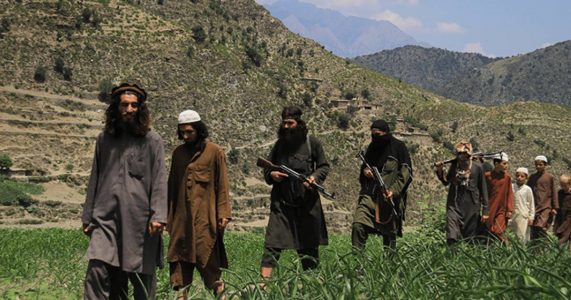
Islamic State affiliated groups on the rise in Badakhshan
Local officials in the northern province of Badakhshan on Tuesday said that Daesh and affiliate groups are moving to establish a stronger military presence in the province so they can continue the war against the Afghan security forces.
According to the local officials, there are around 400 fighters linked with various ‘terrorist groups’ such as Daesh, the Tajikistan-based Ansarullah militant group, the East Turkestan Islamic Movement, the Harkat-i-Islami Uzbekistan and the Uighur jihadists, and these fighters are operating in various parts of the province, but especially in the Khastak valley of Juram district.
Badakhshan province has borders with China, Pakistan and Tajikistan. But Khastak valley of Juram, which is adjacent to Pakistan, is an important point from a military perspective.
Military officials in Badakhshan say that the Khastak valley has been an important strategic area for domestic and foreign militants in the north and northeastern parts of the country over the recent years.
“They (militants) want to reinforce their third base in Badakhshan so that they can operate with more strength,” said Zakaria Sawda, the governor of Badakshan province.
“They have been deployed in Warduj, Yamgan and Khastak valley–they want to fuel the war. International terrorists are undertaking the management of the war in Badakhshan,” said Jawed Mojajdedi, the head of Badakhshan provincial council.
“Over 600 domestic and international terrorists who are associated with Al Qaeda, Daesh and other terrorists have deployed there,” said Lotufullah Alizai, the commander of the second battalion of 217 Pamir Army Corps.
“We need air support to determine the areas where we are trying to move forward,” said Assadullah Mohammadi, the commander of Badakhshan police headquarters.
Violence in Khastak valley has forced local people to flee their homes.
Amanullah, 70, is a resident of Khastak valley and he says that foreign fighters took his house and many families fled the area to save their lives.
“I had two houses there and we escaped to Baharak,” said Amanullah.
“600 families fled Khastak valley,” said Ainuddin, a resident of Khastak,
Badakhshan has 450 kilometers of border area with Pakistan, 100 kilometers with China and more than 800 kilometers with Tajikistan.
Source: Tolo News





